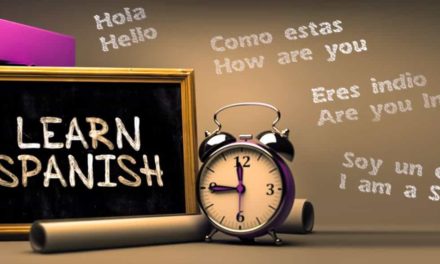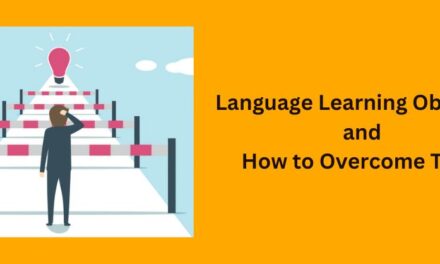How to Use ChatGPT to Accelerate Your Language Learning

If you’re wondering if ChatGPT can help with learning a new language, the answer is a big YES! As someone who’s used it myself for language learning, let me walk you through the awesome ways this AI tool can assist you.
In this comprehensive guide, I’ll dive deep into numerous proven techniques for incorporating ChatGPT into your language learning regimen to:
- Have engaging conversations
- Learn vocabulary rapidly
- Improve grammar and fluency
- Get custom lessons and practice
- Write with fewer errors
- Translate difficult texts
- Immerse yourself in dialogues
- And so much more!
I’ll also share actionable tips to maximize ChatGPT’s abilities for your needs as a language learner. Let’s get started!
Practice Conversational Skills with ChatGPT
One of the most valuable ways to use ChatGPT for language learning is conversational practice.
Since ChatGPT is an AI assistant, you can have natural back-and-forth conversations with it in your target language. This helps you build real dialogue skills.
The key is interacting conversationally as you would with a friend. Don’t just ask boring grammar questions. Have fun, get curious!
For example, I’m learning French so I’ll chat about my day, discuss hobbies, get recommendations for media in French, and more. The conversations help me get more comfortable speaking.
Pro tip: Tell ChatGPT upfront the language you want to practice. You can even specify a proficiency level, like beginner or intermediate.
Speak Fluent, Whole Sentences
Chat with ChatGPT about your day, plans, opinions, or anything else that comes to mind. Focus on responding conversationally in full, coherent sentences instead of just one-word answers.
The more you speak sentence-by-sentence, the more the patterns will become familiar. ChatGPT is patient and will keep responding if you need time to formulate thoughtful replies.
Use Proper Intonation and Pronunciation
Have ChatGPT point out if your intonation or pronunciation needs work. Ask it: “How is my intonation and pronunciation in this language? Please provide feedback so I can improve.”
ChatGPT can highlight areas for growth and give you tips, like focusing on sentence stress, rhythm, individual sounds that need refinement, etc.
Apply New Vocabulary or Grammar
Tell ChatGPT when you’re practicing new vocabulary or grammar concepts so it can guide you. As you try applying new language skills, ChatGPT will politely correct any errors so you learn.
Think Quickly in Your Target Language
Have rapid-fire conversations with ChatGPT to train your brain to think swiftly in your chosen language without translating. The more you activate those thinking pathways, the stronger they become.
Mimic Native Speech Patterns
Pay attention to how ChatGPT structures its responses and take mental notes on features you want to incorporate like tone, fillers, cultural references, etc. Mimicking these patterns helps you sound more natural.
Learn Vocabulary Strategically
Expanding your vocabulary is crucial for fluency. Here are effective techniques for using ChatGPT to grow your lexicon quickly and retain words long-term:
Get Custom Flashcards
Ask ChatGPT to generate flashcards focused on vocabulary you want to master. For example: “Can you make 50 intermediate level flashcards for business vocabulary in Japanese?”
Use these digital flashcards daily via spaced repetition. Test yourself to reinforce definitions before adding new cards.
Learn Thematic Vocabulary
Don’t just learn random words. Ask ChatGPT for vocabulary lists centered around a theme like food, family, hobbies, holidays, jobs etc. Learning related words together in context sticks better.
Use Words You Learn Promptly
When ChatGPT gives you new vocabulary via flashcards or lists, put those words into use right away in your conversations. Applying the words cements them.
Get Examples in Context
When unfamiliar with a word’s usage, ask ChatGPT to provide example sentences demonstrating the word in context. Seeing new vocabulary used properly improves comprehension.
Master Collocations
Have ChatGPT list common collocated words and phrases for vocabulary you’re learning. For instance, words frequently used with “make progress” or “strong desire”. Understanding collocations allows more natural speaking.
Improve Your Grammar
Solid grammar is key for communicating correctly. ChatGPT can provide personalized help tailored to your weak spots:
Get Sentence Corrections
Type sentences in your target language to the best of your ability, then ask ChatGPT to rephrase them with proper grammar. Compare your original to ChatGPT’s fixes to see what needs work.
Learn Grammar Rules Conversationally
When stumped by a pattern, ask ChatGPT to explain the grammar rule conversationally as a teacher would. It will break down complex principles into digestible chunks.
Identify Overused Mistakes
Ask ChatGPT to point out grammar mistakes you tend to repeatedly make based on your conversational practice. Becoming aware of bad habits is the first step to correcting them.
Get Customized Tests
Request practice tests from ChatGPT focused on grammar concepts you need to review. It will generate questions and provide answers and explanations to solidify knowledge.
Fix Errors in Writing
Copy a written piece of yours into ChatGPT and ask it to highlight and explain grammar mistakes. Fixing errors in context embeds proper grammar patterns.
Get Personalized Lessons
Why slog through generic textbook exercises when you can have lessons tailored to your proficiency level, problem spots and interests?
Set Learning Goals
Tell ChatGPT specific concepts you want to focus on learning next, like beginner level verbs, conversational questions, food vocabulary, etc. Giving it goals allows personalized lesson planning.
Explain Concepts Conversationally
Ask ChatGPT to teach lessons conversationally, as a real teacher would. It will break down complex ideas and give examples just like a tutor.
Incorporate Your Interests
Have ChatGPT incorporate your hobbies, background and culture into lessons and examples to increase engagement. The more relevant the material, the better retention.
Address Weak Spots
If you’re struggling with a particular grammar concept or vocabulary type, request extra lessons targeting those weaknesses to reinforce them.
Vary Learning Formats
Don’t just do lectures. Tell ChatGPT to vary lessons with roleplays, games, slideshows, group discussions, demonstration videos and more. Different formats prevent boredom while addressing multiple learning styles.
Get Customized Homework and Tests
After ChatGPT lessons, ask it to generate complementary homework assignments and quizzes. This helps transfer knowledge into long-term memory.
Give Bite-Sized Homework
Ask for mini homework assignments 5-10 minutes long so they’re not overwhelming. Consistent brief practice is more effective than marathon sessions for language retention.
Have Tests Assess Your Retention
After a few days practicing new material, tell ChatGPT to create a short quiz to assess retention. This pinpoints areas needing more practice.
Assign Dialogue and Writing Prompts
Ask ChatGPT to craft homework prompts that make you apply new language skills conversationally or in writing. Articulating concepts teaches them more effectively than passive studying.
Limit Hints and Corrections
Tell ChatGPT to avoid giving hints or immediately correcting errors on assignments. Mimicking real tests and communicating without aid builds confidence.
Writing Support and Feedback
If you’re learning by writing in your target language, ChatGPT can provide personalized feedback:
Fix Common Errors
Ask ChatGPT to highlight recurring grammatical or word choice patterns you need to improve based on a writing sample. Bringing awareness to bad habits is key.
Suggest Alternative Phrasing
For awkward or unnatural sounding sentences, have ChatGPT recommend how to rephrase them more idiomatically. Get exposed to more authentic sentence structures.
Provide Contextual Corrections
Paste a full piece of writing and tell ChatGPT to revise it correcting all errors while preserving your original intent and voice. Compare its corrections in context to embed proper grammar.
Assess Fluency
Ask ChatGPT whether your writing sample sounds fluent or contains signs of non-native speech patterns. Request examples of phrasing that gives you away as a language learner.
Check for Plagiarism
Paste a writing sample and have ChatGPT scan it to check for plagiarized content. It can highlight unoriginal text that needs rewording in your own voice.
Suggest Improvements
Ask ChatGPT for constructive criticism on how to improve your writing’s clarity, flow, word choice, persuasiveness or impact based on examples you provide.
AI Translation Assistance
When you’re ready to challenge yourself, pick texts in your target language and use ChatGPT to translate parts you can’t understand:
Translate Complex Words and Phrases
Copy paragraphs from foreign books, articles, websites etc. into ChatGPT. Highlight specific words or sentences you need help translating.
Explain Cultural References
Ask ChatGPT to explain jokes, slang, idioms, historical references or cultural allusions that don’t make sense to you as a language learner. Filling in those gaps improves comprehension.
Summarize Difficult Passages
For sections that are too advanced, have ChatGPT summarize the main ideas in simpler language so you can grasp the essence. You expand your understanding while building vocabulary.
Define Unknown Vocabulary
Tell ChatGPT to scan a text and provide definitions for all highlighted words or phrases you don’t know. A quick glossary boosts your lexicon.
Revise Poor Translations
Translate something first yourself, then have ChatGPT provide a better translation fixing any significant errors. Compare them side-by-side to improve.
Immersion Through Conversations
Immerse yourself by having ChatGPT generate authentic conversations between native speakers:
Get Contextual Dialogues
Prompt ChatGPT to write dialogues about specific everyday situations, like coworkers chatting on a coffee break, friends making weekend plans, parents and kids discussing school.
Learn Culture From Dialogue
Tell ChatGPT to incorporate culturally relevant details into conversations like accents, dialect, etiquette norms, region-specific terms etc. Exposure to natural culture in context sticks better than explanations alone.
Have Slang Clarified
During dialogues with slang, idioms or unfamiliar terms, have ChatGPT briefly footnote definitions so you learn while remaining immersed. But avoid too many interruptions.
Vary Speakers and Personalities
Tell ChatGPT to make each speaker unique through word choice, tone, grammar etc. For instance, one blunt and formal, the other casual and peppy. Mimicking different communication styles expands your range.
Dialogues for Pronunciation Practice
Ask ChatGPT to pronounce its dialogues aloud (it has text-to-speech capabilities) so you can work on mimicking authentic pronunciation and accent patterns.
Maximizing ChatGPT’s Potential
Here are some pro tips for getting the most out of ChatGPT for language learning:
- Specify your target language and proficiency level so it tailors responses appropriately
- Train it by providing feedback on its answers and corrections
- Request explanations conversationally as a teacher would to aid memory
- Tell ChatGPT when you need help pronunciation or don’t understand a word
- Ask follow-up questions and clarify anything confusing
- When it makes an error, have it rephrase or double check information
- Use its text-to-speech feature to practice listening comprehension
- Take user-initiated conversational turns to improve spontaneous speaking
- Have ChatGPT paraphrase your sentences or texts to expand expression range
- Frequently summarize key takeaways from lessons and conversations to reinforce concepts
- Personalize lessons and practice around your interests to boost engagement
- Export generated flashcards, transcripts and other assets to study offline later
The key is actively guiding ChatGPT to provide you with language practice tailored precisely to your current abilities and needs as a learner. Maximize its potential through strategic, conversational engagement!
Conclusion
As you can see, ChatGPT is an incredibly flexible tool that can accelerate your language acquisition and take it to the next level.
The key is using ChatGPT strategically and consistently as part of a larger learning regimen including reading, writing, listening and speaking practice.
Combined with more traditional study methods, ChatGPT becomes a secret weapon enabling you to converse fluently, expand your vocabulary more rapidly, improve grammar, get custom lessons, develop writing skills, and immerse yourself in authentic dialogues.
I hope these tips empower you to tap into ChatGPT’s potential as an always-available language tutor ready to address your exact ability level and needs.
Soon, you’ll be having nuanced conversations, understanding native materials, and expressing yourself like never before – leaving language barriers behind.
So why not give it a try? Open ChatGPT, start with “Hello, let’s practice Spanish”, and watch your fluency take flight! Let me know if you have any other language learning questions. I’m excited for you to see the possibilities. Now go explore and chat those language skills to greatness!















